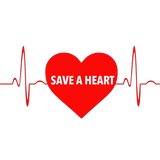Heart Attacks 101: Understanding the Different Types

There are several different types of heart attacks, and they can be classified based on the cause, location, and severity of the damage to the heart.
One common type of heart attack is called a ST-segment elevation myocardial infarction (STEMI). This type of heart attack is caused by a complete blockage of a coronary artery, which supplies blood to the heart. This blockage cuts off the blood supply to the heart, leading to damage or death of the heart muscle. STEMI heart attacks are considered to be the most serious type, and they require urgent medical treatment.
Another type of heart attack is called a non-ST-segment elevation myocardial infarction (NSTEMI). This type of heart attack is also caused by a blockage of a coronary artery, but the blockage is not complete. As a result, there is still some blood flow to the heart, but not enough to meet the heart's needs. NSTEMI heart attacks are less severe than STEMI heart attacks, but they still require medical treatment.
Another common type of heart attack is called an unstable angina. This type of heart attack is caused by a temporary reduction in blood flow to the heart, typically due to a blood clot or narrowed coronary artery. Unlike STEMI and NSTEMI heart attacks, unstable angina does not cause permanent damage to the heart muscle, but it can be a warning sign of an impending heart attack.
A SCAD (spontaneous coronary artery dissection) heart attack is a type of heart attack that is caused by a tear in one of the coronary arteries. The coronary arteries are the blood vessels that supply blood to the heart, and a tear in one of these arteries can reduce or cut off the blood supply to the heart, leading to damage or death of the heart muscle.
SCAD heart attacks are considered to be rare, and they tend to affect younger, healthier individuals who do not have traditional risk factors for heart disease, such as high blood pressure, high cholesterol, or smoking. SCAD heart attacks can also occur in people who have previously had a heart attack, or who have a family history of heart disease. Symptoms of a SCAD heart attack are similar to those of other types of heart attacks, and can include chest pain, shortness of breath, nausea, and vomiting. If someone is experiencing these symptoms, it's important to call for emergency medical services (EMS) right away.
Treatment for a SCAD heart attack typically involves medications to dissolve the blood clot and restore blood flow to the heart, as well as procedures to repair the tear in the artery. In some cases, surgery may be necessary to bypass the damaged artery or to repair it.
Overall, it's important to be aware of the different types of heart attacks and the symptoms they can cause. By recognizing the signs of a heart attack and seeking medical attention promptly, it's possible to prevent further damage to the heart and to save lives.


